What is Bodhi Linux
Revision for “What is Bodhi Linux” created on May 12, 2024 @ 13:05:07
| Title | What is Bodhi Linux |
|---|---|
| Content | <a href="https://www.bodhilinux.com/trial/wp-content/uploads/2015/01/LEAFLOGO.png?x44384&x44384&x58022&x58022&x58022&x58022&x58022&x58022"><img class=" size-full wp-image-955 alignright" src="https://www.bodhilinux.com/trial/wp-content/uploads/2015/01/LEAFLOGO.png?x44384&x44384&x58022&x58022&x58022&x58022&x58022&x58022" alt="What is Bodhi Linux? Bodhi Logo" width="215" height="215" /></a>
<h2>The Twofold Path</h2>
The word <em>bodhi</em> is derived from the Sanskrit word बोधि for "enlightenment."
Bodhi Linux is an operating system based on two elements:
<ul>
<li>Minimalism</li>
<li>The <a href="https://github.com/JeffHoogland/moksha" target="_blank" rel="noopener">Moksha desktop</a></li>
</ul>
<h2>Minimalism</h2>
We aim to strike a balance between providing nothing but a command-line interface and including everything plus the kitchen sink.
We provide you with a base system that is functional, customizable, and very light. The Bodhi 7.0 default application set includes:
<ul>
<li><a href="https://www.enlightenment.org/about-terminology" target="_blank" rel="noopener">Terminology</a> (terminal emulator)</li>
<li><a href="https://en.wikipedia.org/wiki/GNOME_Web">Chromium</a> (web browser)</li>
<li><a href="https://www.bodhilinux.com/a/leafpad/">Leafpad</a> (text editor)</li>
<li><a href="https://www.bodhilinux.com/a/ephoto/">ePhoto</a> (image viewer)</li>
<li><a href="https://www.bodhilinux.com/a/thunar/">Thunar</a> (file manager)</li>
<li><a href="https://www.nongnu.org/synaptic/">Synaptic</a>(package manager)</li>
<li><a href="//manpages.ubuntu.com/manpages/jammy/en/man1/gnome-language-selector.1.html">Gnome language selector</a></li>
<li><a href="//christian.amsuess.com/tools/arandr/">aRandr </a>Monitor Settings</li>
<li><a href="//freedesktop.org/software/pulseaudio/pavucontrol/">Pavucontrol Pulse Audio Control</a></li>
<li><a href="https://github.com/ryenigma/web-browser-manager">Web Browser Manager</a></li>
</ul>
We believe users are smart enough to choose their <a href="https://www.bodhilinux.com/w/adding-software/">own applications</a>, the best of which can be installed directly through apt, synaptic, or our <a href="https://www.bodhilinux.com/a/">AppCenter.</a>
<h2>Moksha Desktop</h2>
Moksha is from the Sanskrit word मोक्ष for "emancipation, liberation, or release."
We've made <a href="https://www.bodhilinux.com/moksha-desktop/">Moksha Desktop</a> fast, flexible, and as simple or fancy as you want it to be.
<a href="https://www.bodhilinux.com/trial/wp-content/uploads/2023/09/shot-2023-09-16_23-14-55.png?x44384"><img class=" size-medium wp-image-1759 aligncenter" src="https://www.bodhilinux.com/trial/wp-content/uploads/2023/09/shot-2023-09-16_23-14-55.png?x44384" alt="What is Bodhi Linux? Check out the Moksha Desktop" width="620" height="312" /></a>
Unlike many modern Linux desktops that go out of the way to hide configuration options from the end-user, Moksha exposes all, allowing you to tinker to your heart's content.
<img class="alignnone wp-image-5818 aligncenter" src="https://www.bodhilinux.com/trial/wp-content/uploads/2023/09/shot-2023-09-16_23-22-35.png?x44384" alt="" width="614" height="345" />
Beyond the configuration options, you can also customize your desktop with a selection of <a href="https://www.bodhilinux.com/a/themepack/">themes</a>, backgrounds, and <a href="https://www.bodhilinux.com/softwaregroup/modules/">modules</a> in our repository.
The Moksha desktop is our continuation of the <a href="https://www.enlightenment.org/about-enlightenment">e17</a> environment Bodhi started with. Moksha improves upon e17 by introducing new features, and features from later Enlightenment releases, as well as keeping the code working with the latest EFL releases. You can learn more about the inception of Moksha <a href="https://www.bodhilinux.com/2015/04/28/introducing-the-moksha-desktop/">here</a>.
Bodhi's core is built on top of the <a href="https://ubuntu.com">Ubuntu</a> operating system. To learn more about Bodhi's relationship with Ubuntu check out our <a href="https://www.bodhilinux.com/w/release-cycle/">release cycle</a>.
If you are excited or curious about Bodhi Linux and want to test run it as a "Live" USB/CD or just plain install it? <em>Click </em><a href="https://www.bodhilinux.com/w/system-requirements/">here</a> for more information about minimum system requirements.
<a href="https://www.bodhilinux.com/">Bodhi Linux Home</a>
<a href="https://www.bodhilinux.com/w/wiki/">Bodhi Linux – Wiki Home Page</a>
<a href="https://www.bodhilinux.com/w/bodhi-linux-how-to/">Bodhi Linux – Wiki Table of Contents</a> |
| Excerpt |
